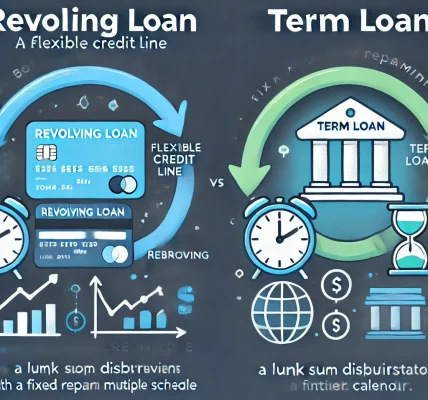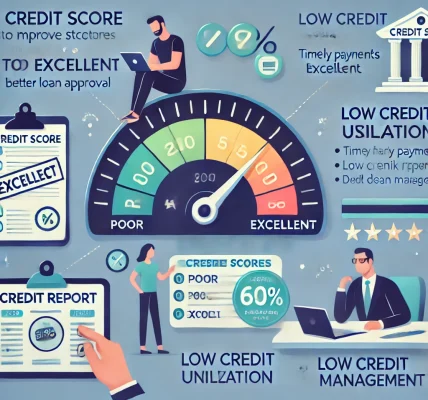Introduction
When applying for a loan, your eligibility and approval process are determined by various loan policies set by financial institutions. These policies establish the criteria lenders use to assess borrowers and decide whether to approve or reject loan applications. Understanding how loan policies impact eligibility and approval can help you prepare for the application process, improve your chances of approval, and secure better loan terms.
This guide explores the critical aspects of loan policies, their role in the approval process, and how you can optimize your financial profile to meet lender requirements.
What Are Loan Policies?
Loan policies are a set of rules and guidelines that financial institutions follow to determine a borrower’s eligibility for a loan. These policies ensure that lenders minimize their risk while providing financial assistance to qualified borrowers. They include requirements related to creditworthiness, income stability, employment status, collateral, and debt-to-income ratios.
Key Loan Policy Factors That Affect Eligibility:
- Credit Score Requirements – Minimum credit score needed for loan approval.
- Income and Employment Stability – Proof of consistent earnings and job security.
- Debt-to-Income Ratio (DTI) – The proportion of income spent on existing debts.
- Loan Type and Amount – The type of loan and requested amount impact approval.
- Collateral and Security – Requirements for secured vs. unsecured loans.
- Repayment Capacity – Ability to repay based on financial standing.
- Banking and Financial History – Previous borrowing behavior and defaults.
- Government and Regulatory Compliance – Legal policies affecting loan disbursement.
How Loan Policies Impact Loan Eligibility
Each lender has unique policies that dictate who qualifies for a loan. Here are the primary ways loan policies impact eligibility:
1. Credit Score and Loan Approval
Your credit score is one of the most critical factors affecting loan eligibility. Lenders assess your score to determine your creditworthiness and risk level.
- High Credit Score (750+) – Higher approval chances, lower interest rates.
- Medium Credit Score (600-749) – Possible approval, but higher interest rates.
- Low Credit Score (<600) – Higher rejection risk or requirement for collateral.
2. Income and Employment Status
Lenders require proof of stable income to ensure you can repay the loan.
- Salaried Employees: Requires salary slips, bank statements, and job continuity.
- Self-Employed Individuals: Requires income tax returns, business financials, and turnover proof.
- Freelancers & Gig Workers: Approval depends on steady income proof and banking history.
3. Debt-to-Income Ratio (DTI)
DTI is the percentage of your monthly income spent on existing loans. Lenders prefer a DTI below 40%, meaning your debts should not consume more than 40% of your income.
- DTI < 30%: High approval chances.
- DTI 30%-40%: Moderate approval chances.
- DTI > 40%: High rejection risk unless backed by strong financials.
4. Collateral and Security Requirements
For secured loans (like home or car loans), lenders require collateral. If you fail to repay, the lender can seize the asset.
- Secured Loans: Lower interest rates, longer repayment tenure, easier approval.
- Unsecured Loans: Higher interest rates, strict eligibility criteria, risk-based approval.
5. Loan Type and Purpose
Different loans have specific eligibility criteria:
- Home Loans: Require property valuation, stable income, and a good credit score.
- Personal Loans: Higher income requirements, shorter tenure, no collateral.
- Business Loans: Require financial statements, business track record, and profitability proof.
- Education Loans: Require proof of admission, co-borrower guarantee, and academic records.
The Loan Approval Process Explained
Understanding the steps in the loan approval process can help you prepare for a successful application.
Step 1: Pre-Qualification
Before applying, lenders conduct a soft inquiry to assess your basic eligibility. This step helps determine whether you meet the basic loan criteria.
Step 2: Document Submission
You must submit key documents such as:
- Identity Proof (ID, Passport, PAN Card)
- Income Proof (Salary Slips, Tax Returns, Bank Statements)
- Credit Score Report
- Collateral Documents (if applicable)
Step 3: Credit Assessment & Verification
Lenders conduct a thorough check on your financial history, employment status, and past loan repayments. A poor history of missed payments or defaults can result in rejection.
Step 4: Loan Offer & Agreement
If approved, you receive a loan offer specifying:
- Loan Amount
- Interest Rate
- Repayment Tenure
- Hidden Charges (Processing Fees, Prepayment Penalty)
- EMI Structure
Step 5: Loan Disbursement
Once you sign the loan agreement, funds are disbursed to your account or directly to the vendor (for home or car loans).
Factors That Can Lead to Loan Rejection
Lenders may reject your loan application due to the following reasons:
- Low Credit Score – Below the required threshold.
- Unstable Employment History – Frequent job changes or lack of income proof.
- High Existing Debt – Excessive debt obligations reduce repayment capacity.
- Insufficient Income – Earnings below the required threshold for the loan amount.
- Incomplete or Incorrect Documentation – Missing critical paperwork or errors in application.
How to Improve Your Loan Eligibility
- Increase Your Credit Score – Pay bills on time, reduce debt, and maintain a good credit mix.
- Maintain Stable Employment – Consistent job history improves lender confidence.
- Lower Your Debt-to-Income Ratio – Pay off existing loans before applying.
- Apply for the Right Loan Amount – Avoid borrowing more than you can afford to repay.
- Choose a Longer Loan Tenure – Lower EMIs improve affordability and approval chances.
- Provide Additional Collateral – Secured loans have higher approval rates.
- Get a Co-Borrower or Guarantor – Increases credibility and reduces lender risk.
Legal Considerations in Loan Policies
Loan policies must comply with financial regulations to ensure fairness and transparency. Here are key legal aspects:
- Truth in Lending Laws – Requires lenders to disclose all terms, interest rates, and fees.
- Fair Credit Reporting Act – Protects borrowers from unfair credit reporting practices.
- Data Privacy Protection – Lenders must keep borrower information confidential.
- Consumer Rights in Loan Agreements – Borrowers have the right to dispute loan terms if misrepresented.
Conclusion
Loan policies significantly impact your eligibility and approval process. By understanding the key factors like credit score, income stability, DTI ratio, and loan types, you can improve your chances of approval and secure better terms. Preparing in advance, maintaining financial discipline, and ensuring compliance with loan policies will help you make informed borrowing decisions while minimizing rejection risks.




